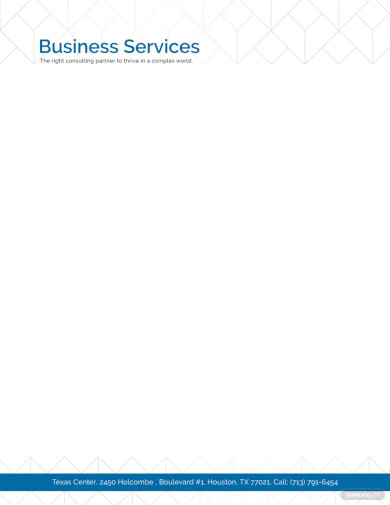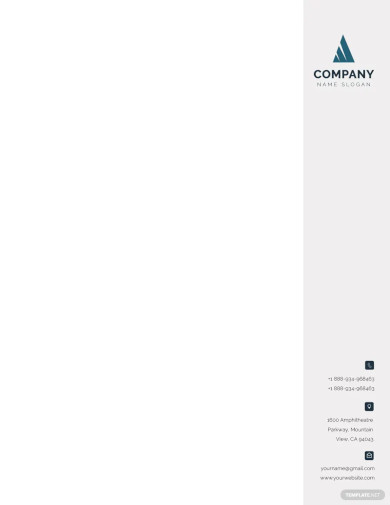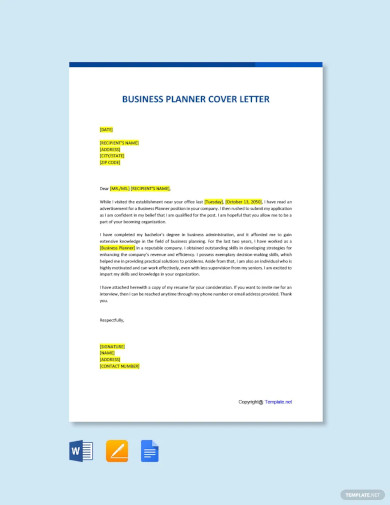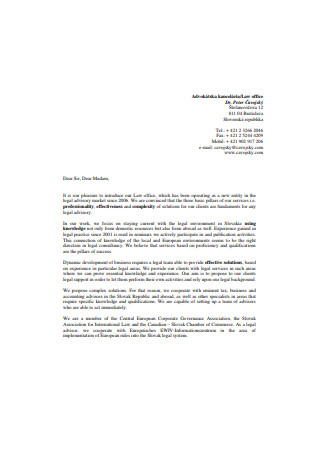Business Letter Samples
-

School Business Letter
download now -

Scholarship Business Letter
download now -

Labour Business Letter
download now -

Business Letter for Students
download now -

Business Letterhead Template
download now -

Formal Business Letter Template
download now -

Business Letterhead Format Template
download now -

Small Business Letterhead Template
download now -

Simple Small Business Letterhead Template
download now -

Closing Business Letter to Clients Template
download now -

Business Warning Letter Template
download now -

Free Creative Business Letterhead Template
download now -

Closing Business Letters to Customers Template
download now -

Modern Business Letterhead Template
download now -

Agriculture Business Letterhead Template
download now -

Minimal Small Business Letterhead Template
download now -

Printable Small Business Letterhead Template
download now -

Free Blank Small Business Letterhead Template
download now -

Automotive Business Letterhead Template
download now -

Creative Small Business Letterhead Template
download now -

Editable Small Business Letterhead Template
download now -

Modern Small Business Letterhead Template
download now -

Printable Business Letterhead Template
download now -

New Business Introduction Letter Template
download now -

Business Trainer Cover Letter Template
download now -

Business Planner Cover Letter Template
download now -

Business Thank You Letter Template
download now -

Product Business Proposal Letter Template
download now -

Free Business Apology Letter for Mistake Template
download now -

Business Letter Example
download now -

Formal Business Letter Exercise Answer Sheet
download now -

Sample Request for Business Cover Letter
download now -

Business Proposal Letter
download now -

Format for a Business Letterhead
download now -

Professional Business Letter
download now -

Personal Restaurant and Cafe Business Letter
download now -

Inward Block Style Business Letter
download now -

Simple Business Complaint Letter
download now -

Law Office Business Introduction Letter
download now -

Business Application Letter
download now -

Business Partnership Letter
download now -

Business Inquiry Correspondence Letter
download now -

Business Reference Letter
download now -

Business Intent Letter
download now -

Business Signature Letter
download now -

Business Apology Letter
download now -

Simple Business Written Letter
download now
FREE Business Letter s to Download
Business Letter Format
Business Letter Samples
What is a Business Letter?
9 Common Types of Business Letters
How to Write a Business Letter
FAQS
How long should a business letter be?
What tone should be used in a business letter?
What are the common mistakes in writing business letters?
How can I ensure my business letter is effective?
What are the best practices for writing a persuasive business letter?
How can I ensure my business letter is error-free?

Download Business Letter Bundle
Business Letter Format
Business Letter Format
Your Contact Information
- Your Name
- Your Position (if applicable)
- Your Company Name (if applicable)
- Address
- City, State, Zip Code
- Email Address
- Phone Number
- Date
Recipient’s Contact Information
- Recipient’s Name
- Recipient’s Position (if applicable)
- Recipient’s Company Name
- Address
- City, State, Zip Code
Salutation
- Dear [Recipient’s Name]:
Use a colon instead of a comma after the salutation in formal business letters.
Body of the Letter
1. Introduction
Begin with a concise introduction stating the purpose of the letter. Mention the reason for writing clearly, such as a request, information, or response to a previous communication.
2. Main Content
This section includes details, supporting information, or background related to the purpose of the letter. Keep the paragraphs clear, relevant, and concise.
3. Conclusion
End the letter by summarizing your main points, restating any requests or actions, and expressing thanks or willingness to collaborate.
Closing
- Sincerely,
Use “Sincerely,” “Best Regards,” or “Yours Truly,” followed by a comma.
Signature
- Your handwritten signature (for physical letters)
- Typed Name
- Your Position (if applicable)
What is a Business Letter?
A business letter is a professional type of letter written for correspondence between a company and another business or an organization and its customers. It follows an approved structure with a tone that depends on the relationship shared between the two parties. Since this sample letter serves as a means of communication for a commercial purpose, it’s likely to contain valuable information on a business-related concern. It must be clear, concise, and courteous to relay information effectively.
Although you can always use notes and memos to make announcements, business letters tend to be more formal in nature—making business letters more appropriate for setting requests, forwarding complaints, and delivering a sales pitch. You can also see more on Business Promotion Letters.

9 Common Types of Business Letters
Business letters must be simple and straightforward to communicate a point. Putting all your thoughts to paper is undoubtedly one of the biggest advantages of having a business letter. But a business letter may serve a variety of functions, each made to generate a particular action. Some of the basic types of business letters include the following:
How to Write a Business Letter

Business people write and send letters more often than you can imagine. While you can never go wrong with letter-writing, you’d be surprised by how a simple letter can greatly affect the way someone views your company. Therefore, knowing how to create these professional documents is vital to efficient communication. You can also see more on Detailed Letter. So if you want to impress your readers and persuade them to take action, here’s a step-by-step guide to keep you focused.
Step 1: Determine the Type of Letter You Need
Business letters can be between a vendor and a customer or a company and another business. It depends on what the writer intends to communicate and how he or she would want the recipient to respond. Among the many types of business letters mentioned, you need to decide what your objective is with the correspondence. Do you want to make an inquiry on a venue for your product launch event? Meet up with a potential job candidate? Or do you wish to recommend a former employee to a prospective employer? Whatever your reason for writing is, you need to make sure that your message remains evident in the business letter.
Step 2: Prepare an Outline
While it isn’t always necessary, creating a short outline does help improve the delivery of your message. This approach is especially crucial for letters that cover critical business concerns. People tend to run into a writer’s block as soon as they start typing, especially if they fail to think about what they want to say beforehand. Diving into the writing process without a plan in place is sure to waste a lot of your time. Keep in mind that it’s much easier to make minor changes than it is to correct significant mistakes in written materials. You can also see more on Business Offer Letters.
But if you begin by gathering the necessary details on the situation you are writing about, the rest of your ideas will come by naturally. Doing so creates a logical structure for your letter to ensure that readers can connect similar ideas more effectively. It also helps you remember points that need emphasizing, in case you forget about them later. Thus, it won’t hurt to spare a few minutes of your time to write the outline of your letter for some guidance.
Step 3: Decide on the Appropriate Format and Order
Unlike the letters addressed to friends and family, these letters adhere to a strict set of rules in a business letter format that writers must follow. You can also see more on Work Letters.
When corresponding with a client, investor, or business partner, consider adding a business letterhead for formality. Most business people use a letterhead as a template to avoid the hassle of writing a heading for every time they need a letter. A formal salutation then follows to address the individual or organization you are writing to, which usually includes a person’s title, if applicable. For the body of your letter, discuss the matter at hand in a concise manner for your recipient’s easy comprehension. Always remember to close the letter appropriately, similar to how it began. You can also see more on Permission Request Letter.
Step 4: Use the Right Tone and Vocabulary
Some letters are more formal than others. Depending on what you intend to deliver, you need to word your letter carefully to avoid coming across as rude or immoral. For instance, no matter how disappointed you are about the actions exhibited by the subject, you don’t want to offend anyone in your complaint letter. Maintaining proper composure is essential to steer clear of trouble with the opposite party. It’s also necessary to observe a professional tone and to use simple vocabulary to maintain an appropriate level of professionalism.
Step 5: Proofread Your Copy
There’s no room in a business letter for spelling errors, grammar mistakes, and minor typos. Regardless of how urgent it is, missing this part of the writing process is a risk you wouldn’t want to take. While we all admit to struggling with the basics of written communication, it’s still not an excuse to ignore the importance of proofreading your letter. In time, you’re bound to overcome the difficulties of the craft. But for now, you have to play it safe by double-checking what you wrote or having someone else review your letter for a second opinion. You can also see more on Collaboration Letters.
Business letters remain crucial for clear, professional communication in business contexts. They ensure formal interactions, convey messages effectively, and maintain professionalism. Adhering to their format and tone is key to achieving desired results and fostering positive professional relationships.
FAQS
How long should a business letter be?
A business letter should be concise, ideally one page, and clearly convey the message without unnecessary details to maintain reader engagement. You can also see more on Proposal Letter.
What tone should be used in a business letter?
The tone should be formal, polite, and respectful, maintaining a professional approach while addressing the recipient’s needs or concerns.
What are the common mistakes in writing business letters?
Common mistakes include using informal language, neglecting proofreading, missing key information, or using an incorrect format. Proofread to ensure clarity and professionalism. You can also see more on Business Proposal Letters.
How can I ensure my business letter is effective?
Ensure clarity, maintain a formal tone, use simple language, and address the recipient’s concerns directly. Re-read and revise to avoid errors and misunderstandings.
What are the best practices for writing a persuasive business letter?
Start with a strong opening, clearly outline benefits, and use a respectful tone. Keep the message focused, and provide supporting data or examples to strengthen your argument. You can also see more on Business Introduction Letters.
How can I ensure my business letter is error-free?
Always proofread your letter for grammar, spelling, and punctuation errors. You can use grammar-check tools or ask a colleague to review it for accuracy. You can also see more on Confirmation Letter
